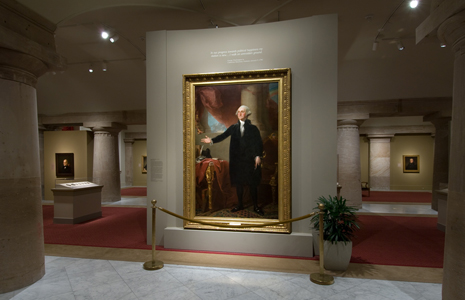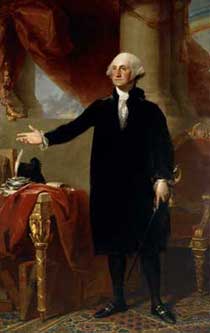George Washington: The First Face of America
George Washington was born 281 years ago today, February 22, 1732

Before the presidents, before Hollywood, and even before Elvis, there was George Washington. The United States was a disunited smear of colonies along the east coast of a mighty land mass when men from cities, farms, hillsides, and swamps gathered under George Washington to fight off foreign rule. In other words, before we were united, he united us.
Sure, there was a Continental Congress, and sure, there was the leadership of men like John Adams of Boston and Thomas Jefferson of Virginia. Both men would go on to be presidents just like George Washington, but neither man led troops into battle and neither man had the charisma to galvanize a disparate lot of colonists and to lead an unlikely army of poorly trained provincials to victory over the mightiest army on earth. Only George Washington did that.
George Washington is almost beyond our recognition in the twenty-first century; perhaps that is why it is so critical to view the images of him and to ponder this man’s work. How is he beyond recognition? Washington, after serving his nation as a soldier and after winning a great victory over the British, was asked to serve his young country by being its first president. He did not ask; he was ASKED. In today’s America, presidential campaigns are waged like marketing wars and hundreds of millions of dollars are spent on television advertising, image branding, and candidate polishing.

By Gilbert Stuart, 1796 / Oil on canvas /
National Portrait Gallery; acquired as a gift
to the nation through the generosity of the
Donald W. Reynolds Foundation
George Washington did not seek the office, and after two terms—remember that only after Franklin Delano Roosevelt was elected four times was a Constitutional amendment ratified limiting the terms of the executive office to two—he voluntarily stepped down from the office which he could easily have turned into a throne.
People wanted Washington in power; many people needed Washington in power to have confidence in the newly formed government. The early federal government was a vague and faceless mass of unknowable components; had we not just thrown off the machinations of an unknowable governmental mass an ocean away? George Washington, on the other hand, was the first face of the revolution, a respected leader, and a man many of the new Americans trusted.
That Washington stepped down from office without being overthrown is significant. Historian Michael H. Hart writes:
As can be seen from the history of many South American and African nations, it is all too easy for a new nation—even if it starts out with a democratic constitution—to soon degenerate into a military dictatorship. While Washington was a firm enough leader to keep the new nation from disintegrating, he had no ambition to hold power indefinitely. He did not wish to be either a king or a dictator, and he set a precedent for the peaceful relinquishment of power—a precedent which has been followed in the United States to this day.
And though we know this first president as the victor in a war, it is because, as Hart notes, this first president was able to change a government in peace that we give him our respect. When one thinks of the corruption and the disrespect that has been seen in offices of public trust at most every level of American municipal, state, and federal governments, it is all the more stunning that George Washington’s impact on this nation is not more regularly invoked as model and method.
Simply put, more often than not, he did the right thing and in doing so, affected not only the Americans of his own day, but all Americans living or dead since his day.
Washington was the first to hold the office, and the first to understand the potential for dynasties, tyrants, and political malfeasance. He also understood that the highest office in the land should be occupied by one who treats that office with respect; also, that occupant must lead by example, show respect to all, and act with grace and diplomacy. Washington understood all that, and, most importantly, he also knew when to yield the office.
How do we pay homage to him? First, the national capital is named after him. There are also towns that take his name, and counties, colleges, universities and a state. Washington monuments are located in many, many places, and the United States Treasury likes him so much that they preserve his image on both the quarter and the one dollar bill.
The National Portrait Gallery honors our first president in keeping George Washington’s portrait as its signature work, and as the first portrait one beholds upon entering America's Presidents. Though many portraits in the collection are larger, it would be difficult to find a portrait more powerful than the Lansdowne portrait of George Washington by Gilbert Stuart (above), the centerpiece of the first presidential gallery, and a national treasure in its own right.
With the Museum of Fine Arts, Boston, the National Portrait Gallery co-owns another work by Gilbert Stuart, the incomplete “Athenaeum” portrait, one of the few life sittings of Washington by any artist. The NPG pays homage to President Washington in many other ways, with works in the collection by Charles Willson Peale, Rembrant Peale, and Jean-Antoine Houdon.
The National Portrait Gallery also celebrates George Washington’s birth, February 22, 1732.
Happy George Washington’s Birthday, America.
—Warren Perry, Catalog of American Portraits
Cited:
Hart, Michael H. The 100: A Ranking of the Most Influential Persons in History. New York: Citadel Press, 1992.